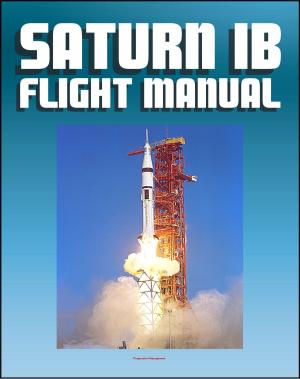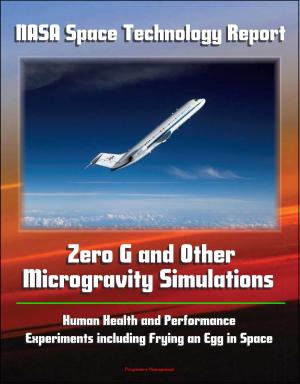The USAF in Korea: Campaigns, Units, and Stations 1950-1953 - Information on the Ten Combat Campaigns of Korean War, Tactical and Support Organizations, Designated K-Sites, Korean Service Medal
Nonfiction, History, Asian, Korean War, Military, Aviation| Author: | Progressive Management | ISBN: | 9781310855597 |
| Publisher: | Progressive Management | Publication: | August 13, 2015 |
| Imprint: | Smashwords Edition | Language: | English |
| Author: | Progressive Management |
| ISBN: | 9781310855597 |
| Publisher: | Progressive Management |
| Publication: | August 13, 2015 |
| Imprint: | Smashwords Edition |
| Language: | English |
Professionally converted for accurate flowing-text e-book format reproduction, this Air Force publication provides information on the ten combat campaigns of the Korean War and gives an organizational view of tactical and support organizations carrying out combat operations. It also locates organizations or elements of organizations at their stations in Korea during the war and identifies designated K-Sites.
Introduction * Korean Service Medal and Streamer * Korean Service Designated Campaigns * UN Defensive * UN Offensive * CCF Intervention * First UN Counteroffensive * CCF Spring Offensive * UN Summer-Fall Offensive * Second Korean Winter * Korea, Summer-Fall 1952 * Third Korean Winter * Korea, Summer 1953 * USAF Combat and Combat Support Organizations in Korea * Fighter-Bomber * Fighter-Escort * Fighter-Interceptor * Light Bombardment * Medium Bombardment * Reconnaissance * Rescue * Tactical Control * Tactical Support * Troop Carrier * Other Combat Support * 1st Shoran Beacon Squadron * 5th Communications Group * 10th Liaison Squadron * 20th Weather Squadron * 30th Weather Squadron * 75th Air Depot Wing * 417th Engineer Aviation Brigade * 801st Medical Air Evacuation Squadron * 3903d Radar Bomb Scoring Group * 6004th Air Intelligence Service Squadron * 6146th Air Force Advisory Group (ROKAF) * 6167th Air Base Group * 6204th Photo Mapping Flight * 6405th Korea Air Materiel Unit * USAF Organizations at Korean Stations * Glossary * K-Site Map and Listings * K-Sites * K-Sites Listed Numerically * K-Sites Listed Alphabetically
During World War II, the group, each with three or four flying squadrons, was the basic combat element of the Army Air Forces. This organization changed in 1947 when the new United States Air Force adopted the wing-base plan. Each combat group then active received a controlling parent wing of the same number and nomenclature. The new wing also controlled three additional groups with the same number to operate the air base, maintain the aircraft, and provide medical care at the base. When combat forces began to fight the war in Korea, the USAF units did so in various organizational forms. In some cases, the combat arm of the wing, plus a portion of the wing's supporting personnel, deployed to the Korean theater, leaving the rest of the wing to operate the home base, to which the group returned after its tour of combat ended. Early in the war, some combat groups deployed and operated under other wings, including temporary four-digit wings. In December 1950, those groups' aligned (same number) parent wings moved on paper from their previous bases and replaced the temporary wings in combat. The personnel of the temporary wing's headquarters were reassigned to the headquarters of its replacement. In 1951, the Strategic Air Command began to eliminate its combat groups by reducing the group headquarters to token strength and attaching the flying squadrons directly to the wing; therefore, wings replaced the medium bombardment groups attached to Far East Air Forces (FEAF) Bomber Command for combat. The groups were either inactivated or reduced in strength to one officer and one enlisted. In most cases, the personnel assigned to the group headquarters were simply reassigned to the wing headquarters, which had moved on paper to the location of the group headquarters. Most other combat organizations in-theater continued to operate with both wing and group headquarters or with group headquarters only. In a few cases, individual squadrons, such as the 319th Fighter-Interceptor Squadron, were directly controlled by an organization higher than either wing or group level.
Professionally converted for accurate flowing-text e-book format reproduction, this Air Force publication provides information on the ten combat campaigns of the Korean War and gives an organizational view of tactical and support organizations carrying out combat operations. It also locates organizations or elements of organizations at their stations in Korea during the war and identifies designated K-Sites.
Introduction * Korean Service Medal and Streamer * Korean Service Designated Campaigns * UN Defensive * UN Offensive * CCF Intervention * First UN Counteroffensive * CCF Spring Offensive * UN Summer-Fall Offensive * Second Korean Winter * Korea, Summer-Fall 1952 * Third Korean Winter * Korea, Summer 1953 * USAF Combat and Combat Support Organizations in Korea * Fighter-Bomber * Fighter-Escort * Fighter-Interceptor * Light Bombardment * Medium Bombardment * Reconnaissance * Rescue * Tactical Control * Tactical Support * Troop Carrier * Other Combat Support * 1st Shoran Beacon Squadron * 5th Communications Group * 10th Liaison Squadron * 20th Weather Squadron * 30th Weather Squadron * 75th Air Depot Wing * 417th Engineer Aviation Brigade * 801st Medical Air Evacuation Squadron * 3903d Radar Bomb Scoring Group * 6004th Air Intelligence Service Squadron * 6146th Air Force Advisory Group (ROKAF) * 6167th Air Base Group * 6204th Photo Mapping Flight * 6405th Korea Air Materiel Unit * USAF Organizations at Korean Stations * Glossary * K-Site Map and Listings * K-Sites * K-Sites Listed Numerically * K-Sites Listed Alphabetically
During World War II, the group, each with three or four flying squadrons, was the basic combat element of the Army Air Forces. This organization changed in 1947 when the new United States Air Force adopted the wing-base plan. Each combat group then active received a controlling parent wing of the same number and nomenclature. The new wing also controlled three additional groups with the same number to operate the air base, maintain the aircraft, and provide medical care at the base. When combat forces began to fight the war in Korea, the USAF units did so in various organizational forms. In some cases, the combat arm of the wing, plus a portion of the wing's supporting personnel, deployed to the Korean theater, leaving the rest of the wing to operate the home base, to which the group returned after its tour of combat ended. Early in the war, some combat groups deployed and operated under other wings, including temporary four-digit wings. In December 1950, those groups' aligned (same number) parent wings moved on paper from their previous bases and replaced the temporary wings in combat. The personnel of the temporary wing's headquarters were reassigned to the headquarters of its replacement. In 1951, the Strategic Air Command began to eliminate its combat groups by reducing the group headquarters to token strength and attaching the flying squadrons directly to the wing; therefore, wings replaced the medium bombardment groups attached to Far East Air Forces (FEAF) Bomber Command for combat. The groups were either inactivated or reduced in strength to one officer and one enlisted. In most cases, the personnel assigned to the group headquarters were simply reassigned to the wing headquarters, which had moved on paper to the location of the group headquarters. Most other combat organizations in-theater continued to operate with both wing and group headquarters or with group headquarters only. In a few cases, individual squadrons, such as the 319th Fighter-Interceptor Squadron, were directly controlled by an organization higher than either wing or group level.















